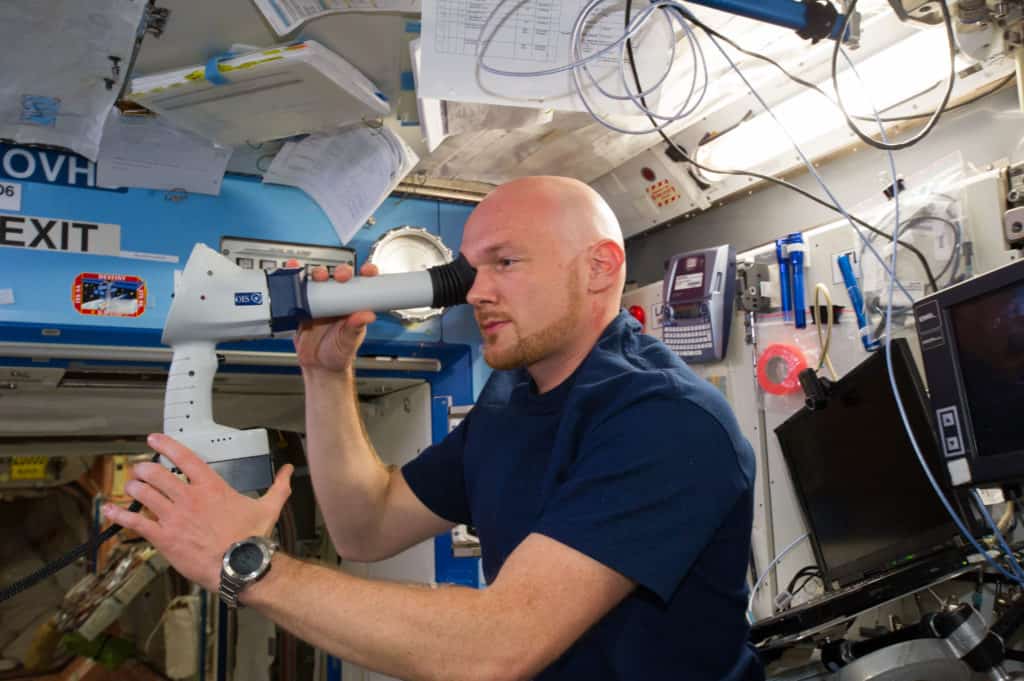Whenever people, at last, get the opportunity to investigate Mars, the individuals from those manned missions will be a large number of miles from home with postponed correspondences. Before they go, researchers need to comprehend however much as could be expected about the likely impacts of microgravity and radiation on the human body.
Being In Space Alters Human Eyes
A major advance toward this objective was the One-Year Mission when NASA space traveler Scott Kelly and Russian cosmonaut Mikhail Kornienko went through 340 days on the International Space Station from March 2015 to March 2016.

American space traveler Scott Kelly (left) and Russian cosmonaut Mikhail Kornienko (right) went through a year on the space station.
The space wayfarers went through almost a year living without gravity. The information accumulated previously, during, and after their flight contributed significantly to a superior comprehension of what befalls the human body in space. The two men were tried as long as a year after their central goal.
A worry that has arisen with respect to space explorers is how their eyes change during long-span spaceflight, enduring a half year or more, and expected effects on their eye-being over the long run. While team individuals commonly go through four to a half-year on the space station, future arranged missions enduring a year or longer warrant more examination, as indicated by specialists.
The effect on the wellbeing of space explorers’ vision because of long-haul spaceflight recently was known as visual debilitation and intracranial pressing factor, or VIIP, disorder. Scientists currently allude to ophthalmologic and neurologic discoveries in space explorers after long-length spaceflight as a spaceflight-related neuro-visual disorder, otherwise called SANS.
Another examination zeroed in on visual changes and issues experienced by Kelly and Kornienko distributed Thursday in the diary JAMA Opthalmology.
“After space explorers started flying long-span spaceflight missions of around a half year, we began noticing changes according to certain space travelers that we had not seen when they flew short around 2-week long missions on the Space Shuttle,” said study creator Brandon R. Macias, overseer of the Cardiovascular and Vision Laboratory at NASA Johnson Space Center in Houston, in an email.
“We presently have a couple of space explorers that have flown significantly longer span missions of as long as one year in space, and our primer discoveries recommend that spaceflight mission term may add to demolished visual primary changes, for example, growing of the optic nerve head tissues.”
The progressions saw in Kelly and Kornienko were contrasted and team individuals who went through around a half year on the station.
The two men encountered various underlying changes in their eyes. One created gentle optic plate edema.
“Optic circle edema can happen when the nerve filaments that enter the rear of the eye swell or when CSF (Cerebral Spinal liquid) gathers around the nerve strands,” Macias said. “On the off chance that the growth is serious and goes on for an extensive stretch of time, visual capacity can be affected.”
The other man experienced optic circle edema notwithstanding the reformist advancement of choroidal folds, as per the investigation. Neither one of the men was distinguished in regards to the progressions they experience.
“The retina at the rear of the eye is a smooth layer,” Macias said. “Choroidal folds create when this tissue gets wrinkled and lopsided. These folds can have various examples relying upon the area and seriousness and can possibly impede visual capacity.” The two men recuperated from optic circle edema after spaceflight; however,choroidal folds don’t in every case completely recuperate, he said. These primary changes haven’t brought about any critical practical changes to their eyes. In any case, Macias noticed that there is no information on either team part recent year subsequent to getting back to Earth
With over 15 years as a practicing journalist, Nikki Attkisson found herself at Powdersville Post now after working at several other publications. She is an award-winning journalist with an entrepreneurial spirit and worked as a journalist covering technology, innovation, environmental issues, politics, health etc. Nikki Attkisson has also worked on product development, content strategy, and editorial management for numerous media companies. She began her career at local news stations and worked as a reporter in national newspapers.
